
THE XERCES SOCIETY FOR INVERTEBRATE CONSERVATION Aquatic Invertebrates in Pacific Northwest Freshwater Wetlands |
| Identify taxa |
|
Technically, these are the only insects that are truly "bugs." The terrestrial true bugs can be important economic pests, particularly as agricultural infestations. Many terrestrial Hemiptera are widely recognized, such as stink bugs and assassin bugs. Some aquatic true bugs are also well known, particularly the water strider. In aquatic environments, true bugs are a very important and particularly voracious group of predators. One of their favorite foods is mosquito larvae and adults, which should earn them some respect. Hemipterans tend to be found in warm water bodies with still or slow water and abundant vegetation, so you should expect to see them in wetlands. Few true bugs are benthic; most of them inhabit the water surface and the water column just below the surface. For the most part, Hemiptera have a one year life cycle in which they lay eggs in the spring, develop through the summer, and either hibernate or remain active as adults in the winter. The name Hemiptera (hemi = partial; ptera = wing) describes the wings of adult true bugs; the basal half of each wing is tough and leathery, and the tips are membranous and fragile. The wings are very distinct and cross over each other in a scissor-like way. Another unique feature of Hemiptera is their modified, piercing mouthpart called the rostrum or beak. They use their beak to pierce prey, inject digestive enzymes, and suck out food. The most commonly encountered Hemipteran families in Pacific Northwest wetlands are the water boatmen (Corixidae), backswimmers (Notonectidae) and water striders (Gerridae).
|
| Key to Families: | |||
Claws on front leg placed before the tip of the leg (pre-apical claws); antennae are clearly visible and longer than the width of the head. |
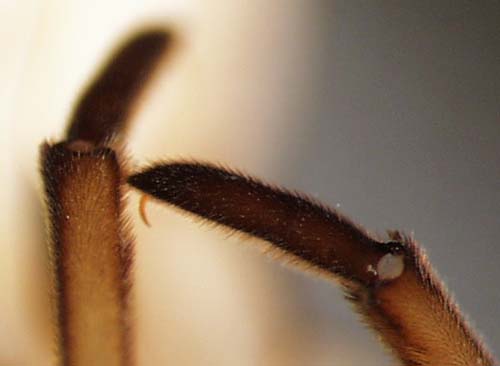    |
||
Claws on the tip of the front leg; antennae are clearly visible and longer than the width of the head. |
 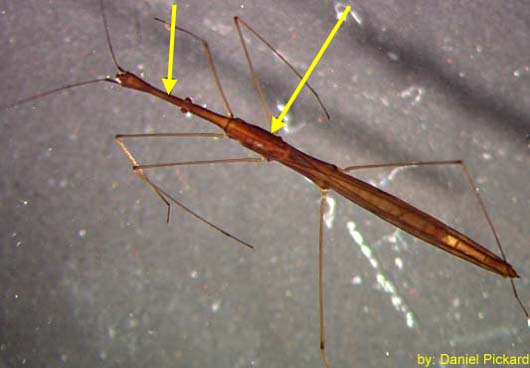  |
||
Antennae are not clearly visible; two long
breathing tubes project from the tip of the abdomen - Nepidae |
 |
||
Hind legs are paddle-shaped, hairy, and lack claws; antennae are not clearly visible. |
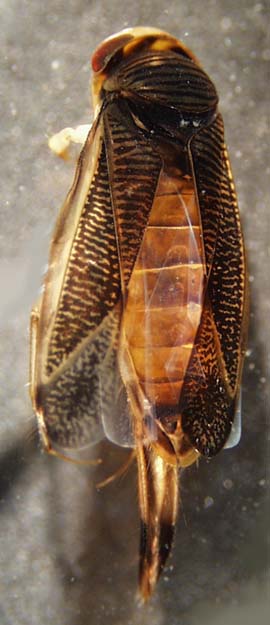  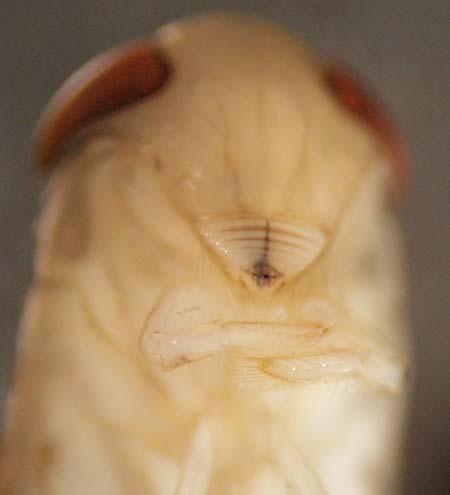 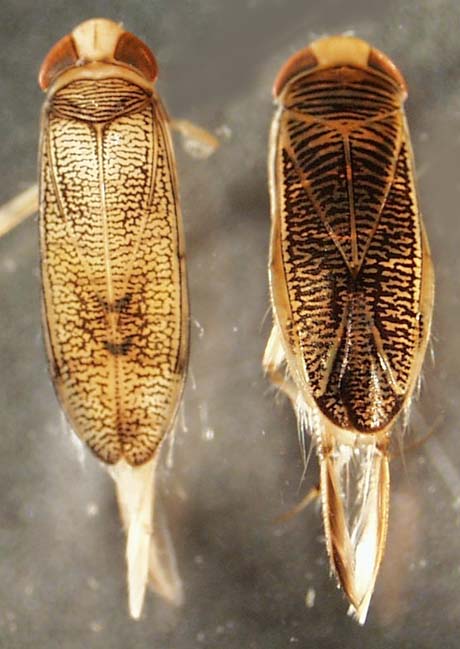 |
||
The abdomen does not have a long breathing tube; , antennae are not clearly visible; claws present on hind legs. |
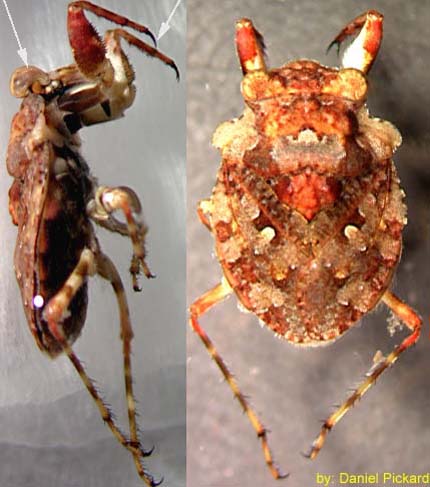 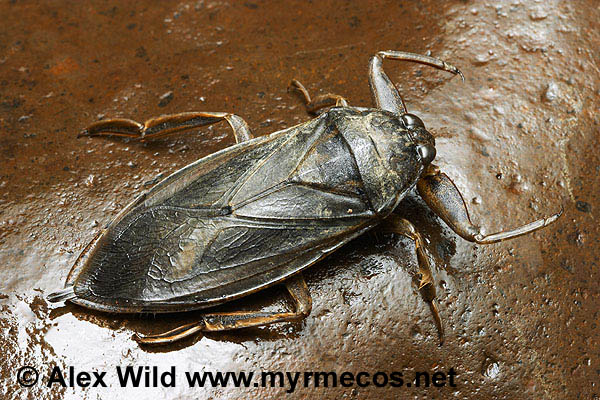  |
||
Hemiptera uncommon in wetlands Gelastocoridae
|
 |
|
Belostomatidae (giant water bugs) |
|
© 2007 Xerces Society
Contact info@xerces.org